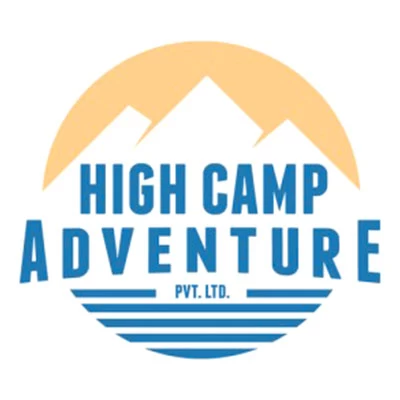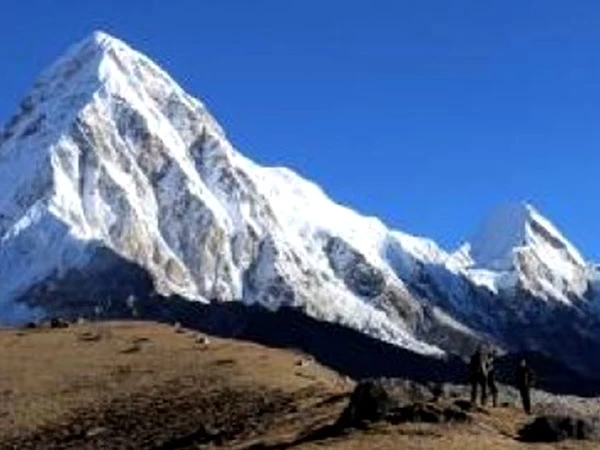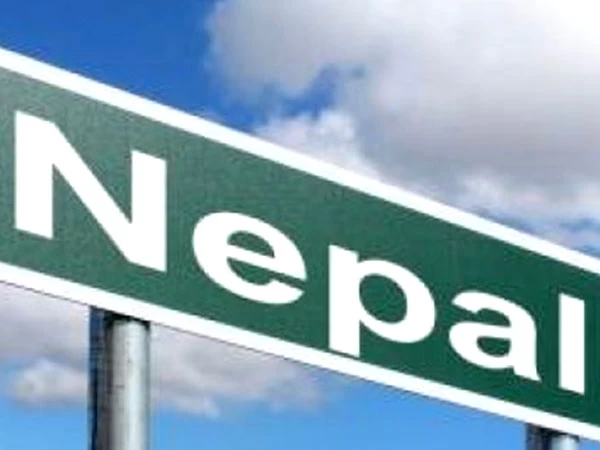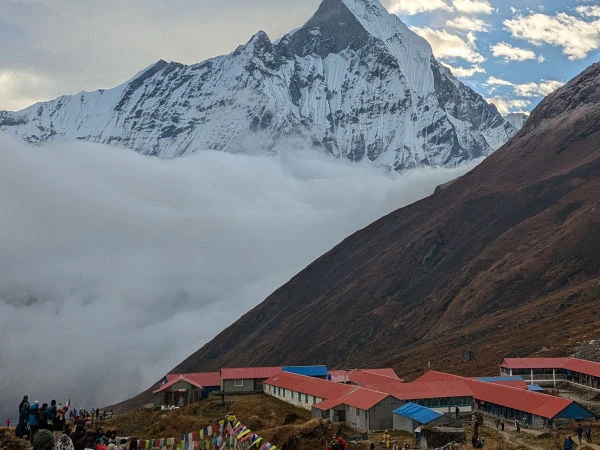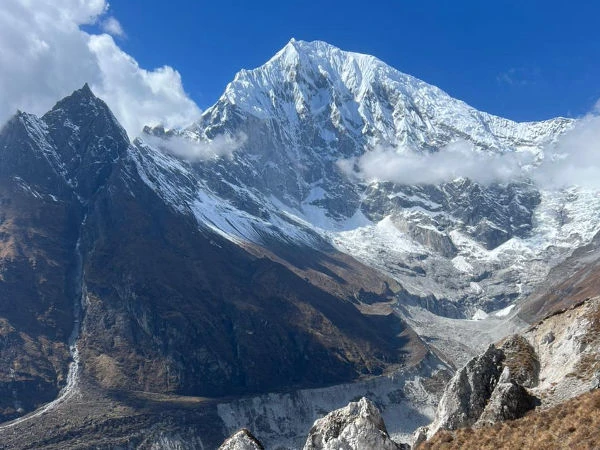Nepal is one of the most fascinating travel destinations on earth. The country is more popular for trekking, sightseeing, cultural encounters and religious pilgrimages.
Traveling to Nepal requires a visa for entry. And you can get the visa on arrival at the Tribhuvan International airport with some small procedures. You must do lots of preparations and researches before going to Nepal. Nepal has its own religious and cultural norms. So, it is better that you prepare yourself for a visit to Nepal prior to coming here.
Get ready to meet with the culturally rich Kathmandu valley, remote yet exotic Himalayan trails, bumpy bus services, and helpful Nepalese people with golden souls.
Do not complain about the walks in the narrow and crowded streets of Kathmandu. That is the beauty of alleyways of the valley. Or, you can take a bus ride into the countryside. Visit the popular UNESCO world heritage sites. Blend with the scenic beauty.
Aren’t you excited to take over the trails that take you into the heart of nature?
Trust me! You will never feel disappointed with your plan for Nepal visit. The wonders of nature and culture are alluring.
1. Getting a Nepalese Visa
You must have a Nepalese visa to travel anywhere in Nepal. ( If you are an Indian, you won’t require it.)
The first thing you must do after arriving in Nepal is getting a Nepalese visa. You can get a visa on arrival at the Tribhuvan International Airport, Kathmandu. Also, the visa is available at the border entry points in Kakarvitta, Birgunj, Bhairahawa, Kodari, and Nepalgunj.
You can also get you a visa at the Nepal Embassy or at Nepal’s Diplomatic Mission.
For visa renewals, you must visit the Department of Immigration in Kathmandu.
As per the number of days you are planning here in Nepal, the cost of your Nepalese Visa differs.
2. Social Etiquettes in Nepal
What to do and what not to?
This is among the most important things that you must take care of. Here we have listed some basic rules of proper etiquette that are most common in Nepal:
- Rather than shaking hands with people, greet them with the word “Namaste”. Place your palms together in front of your chest like in a prayer position while saying it. Nepalese people shake hands at the office or official works.
- Kissing, hugging or displaying affections in the public is very uncommon. Try to avoid these things.
- Do not smoke while you are entering temples, homes or religious sites. Taking off your shoes is mandatory before entering in such places.
- Dress properly while you go out. We advise you not to wear sleeveless tops, scanty T-shirts and shorts. No nudity! Leave your bikinis and wear one piece while you are swimming, or doing any water sports.
- Do not make use of your left hand when you are giving, taking, eating, shaking hands, etc.
- You must ask permission to take a picture of people. Taking photographs inside temples aren’t often allowed.
3. TIMS (Trekking Information Management System) and Permit
No trekking in Nepal without a TIMS Card!
For trekking in all the trekking areas in Nepal, you will require a TIMS card. You can get your TIMS card at the Nepal Tourism Board office at Kathmandu. Also, you can get it at the TAAN offices in Kathmandu and in Pokhara.
To get a TIMS Card, you need to submit a copy of your passport and two passport-sized photos.
If you are trekking with some registered trekking agencies, they might issue TIMS permits for you.
Entering the Conservation Areas, National parks, Wildlife Reserves, Hunting areas, and some other special areas require a permit card.
You can get a permit for the conservation area and national parks at the Nepal Tourism Board office in Kathmandu. Also, you can get the permit at the main entrance gate of the park.
4. Festival and Events
Nepalese people celebrate lots of festivals and events. Multiple culture and ethnicity boost lot’s of celebrations and cultural practices here in Nepal.
Dashain and Tihar are the major festivals. Besides, Nepalese celebrate Nepali New Year, Maha Shivaratri, Holi, Buddha Jayanti, etc.
At different places, people celebrate their local festivals. You will see Newari Jatras in Kathmandu, Bhaktapur, and Lalitpur. During high altitude travels near the Himalayas, you will see some festivals of the Sherpa, Tamangs, and other ethnic races.
The time of festivals and events is rejoiceful. While traveling Nepal during these times, you will enjoy the festive vibes and happy hearts. And becoming a part of those cultural and religious celebrations and enjoying the unique delicacies is such an amazing experience.
5. Foods and Food Safety
Most of the travelers get diarrheal illnesses while traveling in Nepal. This is because of the drinking water and the foods available in various parts and its sanitation. Consumption of unhealthy foods can cause food poisoning and illnesses.
In Kathmandu and Pokhara, the restaurants will serve everything from traditional fare to popular international dishes. But during your treks in Nepal, you will walk into remote Nepal.
If you choose to do the Everest Base Camp trek, the places in Everest are very remote. The Buddhist practice doesn’t allow cutting animals for meat.
So, they transport meats via yaks, mules, and porters. Consuming meat products thus becomes unhygienic because of the poor storage of meat products due to the lack of proper refrigeration.
The best thing to eat during the remote treks and travels is the Nepali “Dal-Bhat’.
Dal-Bhat is a dish of rice, lentils, and fresh vegetables. It is fresh, healthy, and filling.
And, as far as possible you need to avoid street food flavored in artificial colors and unhealthy spices. It results in stomach upset.
6. Adventure Experiences
Traveling in Nepal is an adventurous experience. It is the most popular adventure tourism destinations in the world. The diverse geology and incredible terrains make the trekking experiences in Nepal an adventurous one.
The adventures not only involves hiking and trekkings. Besides, Nepal offers a huge variety of outdoor adventures and sports. You will have many options such as Rafting in the Bhote Koshi and Trishuli river, mountain biking, canyoning, rock climbing, mountaineering, and paragliding.
Are you brave enough to experience the second highest bungee jump in the world?
If yes, get ready to run over the mighty Bhote Koshi River. Even if you are the most daring traveler, Nepal knows different ways to satisfy you.
Calculate the risk factors, and take some precautions before choosing to experience the fearsome adventures.
7. Water Safety in Nepal
Remember! Tap waters may not always be healthy.
Waters from taps, rivers, and streams aren’t safe to drink while trekking or traveling in Nepal. Even when you are staying in a hotel, do not consume the tap water. Always drink the boiled/ mineral waters or bottled water.
If you are trekking, carry water purifying liquids or tablets with you. Add them to the water from drinkable water taps, and drink them. Some people carry a boiling pan and a small filter for the tap water.
Stick to bottled water! Don’t worry about spending money on water. Healthy water means a healthy body. Buy bottled water, they are available in every store.
Drink healthy water, prevent yourself from getting ill due to water contamination.
8. Nepal’s UNESCO World Heritage Sites
Visiting the UNESCO sites in Nepal is an awesome experience that you must not miss. These heritage sites are amazing man-made as well as natural wonders.
There are 10 UNESCO heritage sites in Nepal seven of which are inside the Kathmandu Valley. The seven heritage sites, being in close proximity allows you to see them all in a single day. Some are Basantapur Durbar Square, Patan Durbar Square, Bhaktapur Durbar Square, Swayambhunath, Boudhanath, and so on.
The birthplace of Lord Buddha, Lumbini is the holiest place for Buddhist pilgrimage. The Chitwan national park, the first national park in Nepal is a habitat of various wildlife. You can visit both these sites on a small 1-2 days tour from Kathmandu valley.
One can visit the Sagarmatha National Park on their Everest region treks.
9. Everest Mountain Flight and Heli Tours to Everest
Everyone who visits Nepal has a desire of seeing Everest. Many of them choose to trek to the Everest Base Camp. But not everyone has enough time for the trek.
So, as an alternative to the EBC trek or the Everest View treks, you will have an option. The Everest mountain flight and EBC Heli tours are most sorted tours these days.
On these tours, you can fly above Everest, and get a bird’s eye view of Mt. Everest and the entire region. Do not miss the opportunity if you are coming to Nepal.
10. Shopping in Nepal
You need not carry lots of clothing, footwears, and travel accessories while coming to Nepal. In Thamel and Pokhara, you will find many shops where you can find good brand clothes and other accessories.
The costs are negotiable and aren’t much. Also, you can get unique, handmade products and gifts for your friends and family while you return.
You can visit some Nepalese boutiques where you can get funky knitted items to neuvo hippie themed shirts and dresses. You will find plenty of street vendors and malls in Kathmandu and Pokhara.
11. Relying on Your MasterCard? Money vs. Credit Cards
Relying solely on money isn’t a good option while traveling in Nepal. The option is safe if you are traveling in the major cities like Kathmandu and Pokhara. Credit card machines are available while you are in these big cities.
But if you go on a trek, or if you visit some remote places or villages, there are no ATM machines or if there are any they may not function properly every time. So, it is always a good decision to get enough hand cash before you leave cities to visit elsewhere.
Most of the places including restaurants, cafes, and transportation accept paper Rupees only.
A card comes handy for booking hotels in advance. But this thing again applies to city areas only.
12. Do Not Trek Alone in the Himalayas
Trekking or hiking alone in most of the places in Nepal is dangerous. Trek with experienced guides. They will help you out of any difficult situations possible.
For a number of reasons, we suggest you to trek with a guide or a partner always.
The dense woods can be tricky. There are chances that you get lost and never come back.
Getting injured is common during mountain treks. Crossing the Georges, passes, and rugged landscapes aren’t easy. Altitude sickness may happen to anyone, anywhere. Learn about possibilities, symptoms, and preventive measures of altitude sickness.
For your personal safety and your good’s well-being a guide and a porter are very helpful while traveling in the remote and high altitude regions in Nepal.
13. Allergies and Sunburns
Kathmandu is also called as “Dhulomandu”- ie city of dust, these days. Because of road constructions, and other reasons, lots of dust particles are accumulated in the atmosphere.
While walking in the dusty Kathmandu valley, you might get the serious eye, throat, and skin allergies. Get a face mask as soon as you arrive in Kathmandu.
Clean your face and body when you arrive at your hotel after touring around. Wear sunglasses, beneficial for both sun and dust. Take care of your throat and lungs.
Also, during treks, your skin will get exposed to the sunlight. As a result, you might get sunburns and suntans. So, make use of high SPF sunscreen lotions and moisturizers for your body and face.
14. Travel Insurance is a Good Investment
Travel insurance will prevent unexpected expenses during your stay in Nepal. Traveling to Nepal is an adventurous task. You might get some sickness or injuries.
During cases of accidental expenses including the medical expense, travel insurance will be helpful. It will help you during accidents like cases of theft, accidents, flight cancellations, and many others.
Traveling without travel insurance is a bad decision. It can even ruin your trip sometimes.
15. Planning Your Trip: Travels, Tours, and Staying
They say, “Unplanned tours are the best”. But this isn’t applicable to all travelers.
Regarding your stays, treks, and tours in Nepal, plan them properly after collecting necessary information. Be sure if you want to travel with a travel company or by yourself.
You should be extra careful while hiring guides. Some people who call themselves a guide are scams. Make sure they have a trekking guide license.
You can trust us to plan your trips and tours in Nepal. We promise to arrange the licensed and experienced guides for you. Plus we also plan the customizable itinerary to fit your needs. So, contact us to book any trips, tours, or treks in Nepal.
